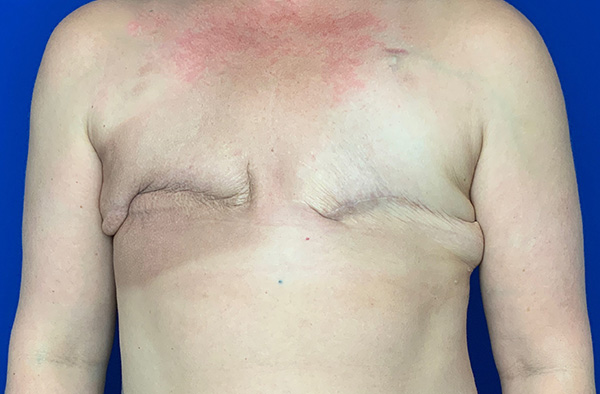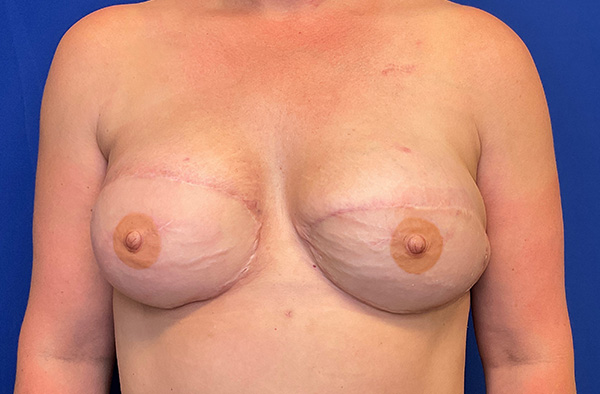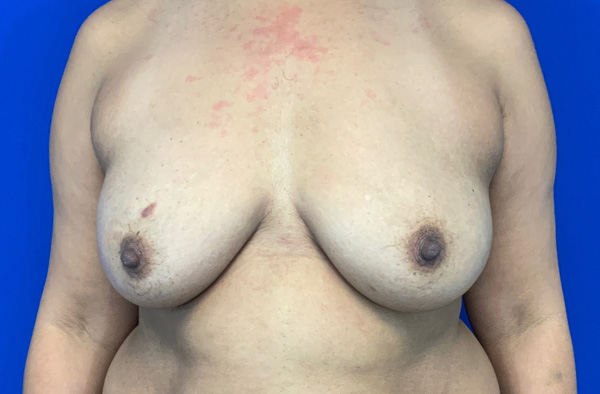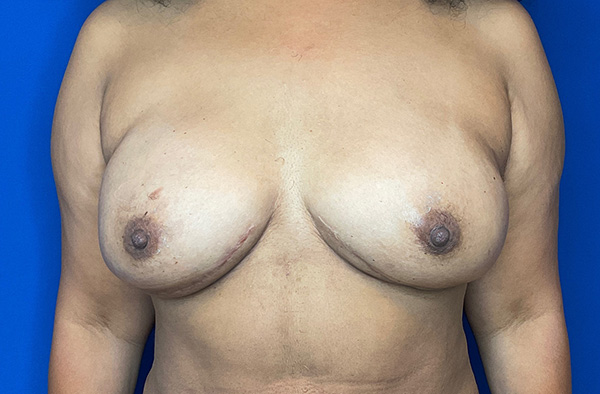What is a DIEP flap?
A DIEP flap is a form of autologous tissue breast reconstruction, meaning it uses your own tissue, from another area of your body, to make a new breast. It is named for the small blood vessel that runs through the flap, the deep inferior epigastric artery perforator. This is the tissue located in the lower abdomen, between the belly button (umbilicus) and the lower fold of skin at the pubic bone. It represents the most common and state-of-the-art type of autologous tissue technique in use today. Unlike the older TRAM flap, the DIEP flap preserves the muscle and fascia (the strength layer) in the abdominal wall, so that your risk for a hernia or a bulge in the tummy after surgery is much, much lower. Also, since the muscle is still in its correct location in the abdomen, your strength is not reduced like it might be with a TRAM flap.
How is a DIEP flap performed?
The tissue of the DIEP flap from the lower abdomen is actually completely removed from your body, along with the blood vessels (at least one artery and one vein) that supply the tissue. Then it is reattached in your chest by sewing together the tiny, 2-3 millimeter wide blood vessels, under the microscope. The good blood vessels in your chest run underneath the ribs, so a short piece of cartilage is removed from one rib per side to give access to these blood vessels. After the DIEP flap is reattached to your chest, it becomes a natural new breast, since it is your own tissue.

What are the benefits of a DIEP flap?
It is your own tissue! There is no foreign material from a breast implant in your body. A DIEP flap tends to have a more natural sag than an implant. It brings in healthy, non-radiated tissue to make a new breast if you had previous reconstruction that was radiated and did not do well. And it’s a permanent result. You don’t have to worry about any of the long-term issues that implants present, such as what to do if they break, when to get routine imaging, or what if scar tissue forms around the implant. Interestingly, many women who have DIEP flap surgery eventually refer to their new breasts as their “breasts,” whereas some women who have implant reconstruction will always refer to their reconstructed breasts as their “implants,” since they might never feel completely like a part of them.
What are the risks of a DIEP flap?
While a DIEP flap is a great option for many women, you should make sure you are choosing the best option for you. Compared to implant breast reconstruction, DIEP flap surgery involves longer surgery, longer hospital stay, longer recovery, risk of losing the entire flap of tissue due to a blood clot, and potential issues at the donor site of the abdomen, including a scar from hip to hip and the possibility of muscle and abdominal wall weakness producing a bulge. Your surgeon will talk with you about whether you may be a candidate for DIEP flap surgery and what your best options are.
What can I expect in the hospital?
Because the operation is very complex and technically demanding, DIEP flap surgery is longer than surgery for implants or tissue expanders. One side might take 6 hours, and two sides could be 8-12 hours. Is it safe to be under anesthesia for this long? The short answer, for most patients, is yes. Patients with significant medical problems, such as coronary artery heart disease or end stage renal disease on dialysis, would not undergo a long surgery like this because they would not be candidates for DIEP flap surgery.
The connections of the tiny blood vessels are very important. If they develop a blood clot, it could result in losing the entire flap of tissue. The risk is highest in the first two days. Because of that, a special laser monitor is attached to the flap to measure oxygen in the skin. The nurses check it once an hour for the first two days. Your surgeon can also follow the measurements in real time on an app on his smartphone. If there is a problem, sometimes it requires an urgent trip back to the operating room to try to fix it and save the flap. Most women spend about three days in the hospital.





